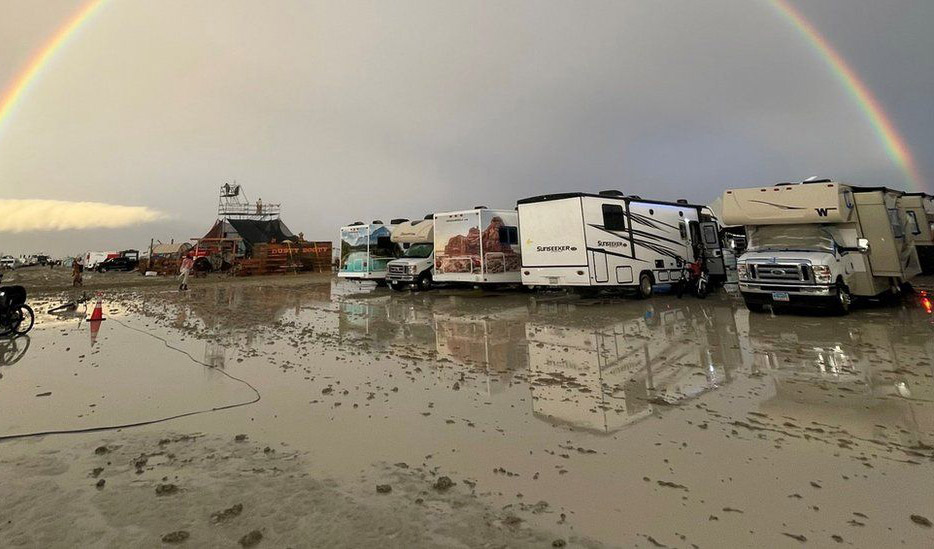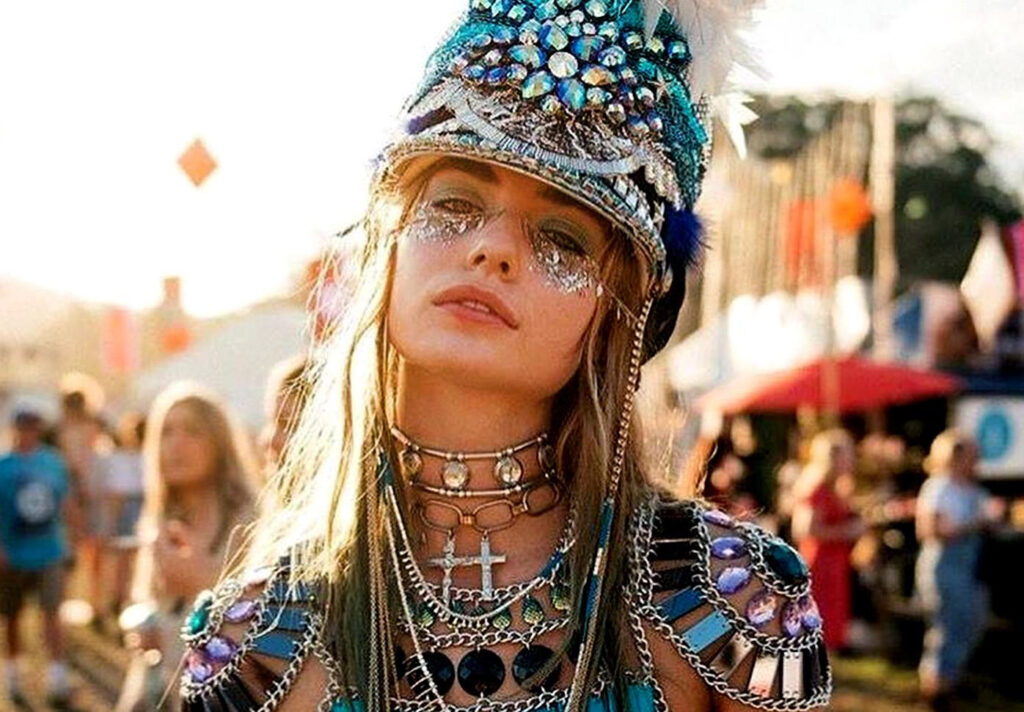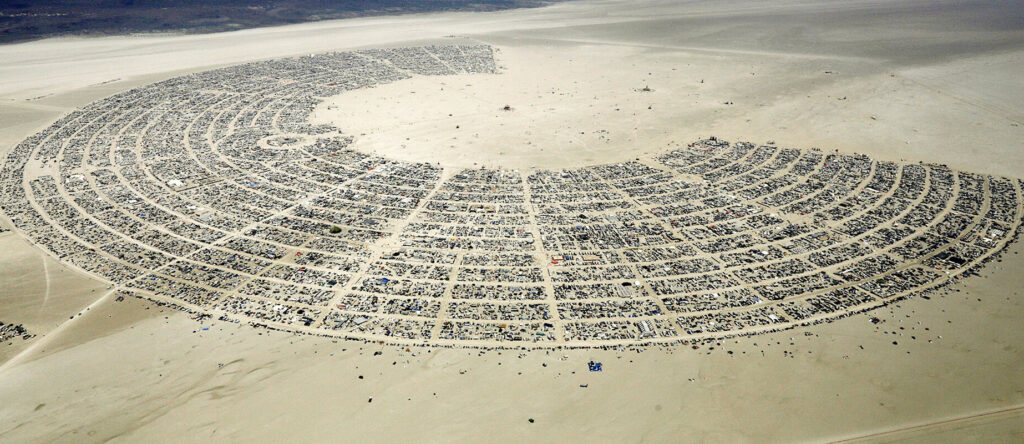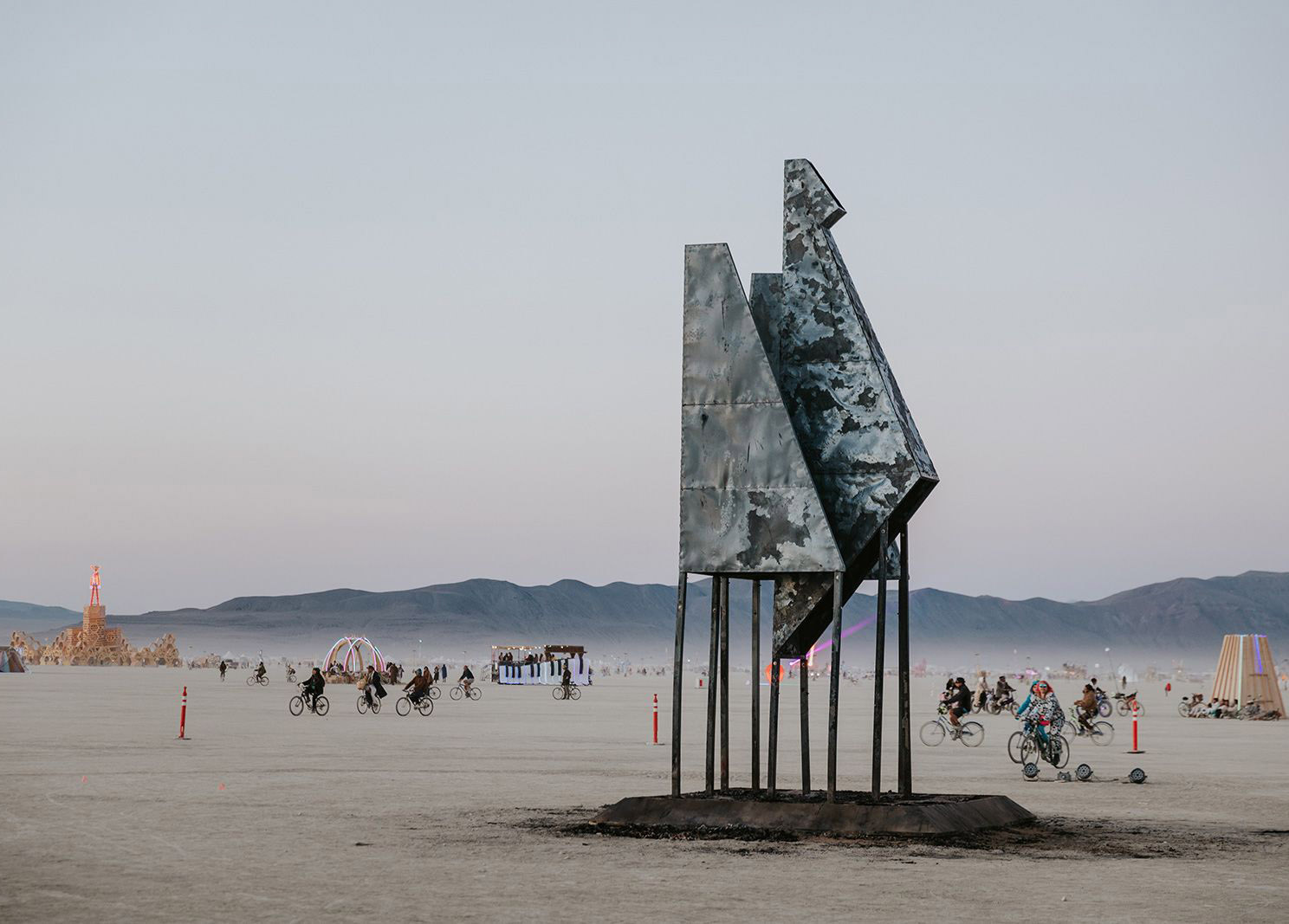Every year, a barren expanse of Nevada’s Black Rock Desert transforms into a vibrant, temporary city that defies convention. This is Burning Man, a unique and immersive event that transcends the boundaries of a traditional festival. In this blog post, we’ll journey into the heart of Burning Man, exploring its origins, principles, and the profound impact it has on those who participate.
Origins and Evolution:
Burning Man emerged from humble beginnings in 1986 when Larry Harvey and a group of friends burned an effigy on San Francisco’s Baker Beach. What started as a small act of self-expression has since grown into a global phenomenon.
The Black Rock City:
The event’s centerpiece is Black Rock City, a temporary metropolis that arises for one week each year. This city is built entirely by its participants, known as “Burners,” who converge in the desert to create a self-sustaining community.
Radical Self-Expression:
One of Burning Man’s core principles is radical self-expression. Here, participants are encouraged to express themselves freely, whether through art installations, performances, or creative fashion. The result is a vibrant, living canvas of human expression.

Art in the Desert:
Art is at the heart of Burning Man. The playa, an open desert space within Black Rock City, features awe-inspiring art installations that range from massive sculptures to intricate interactive exhibits. Each piece is carefully curated and often created with the intention of being burned at the event’s climax.
Leave No Trace:
A commitment to environmental responsibility is another vital principle. Participants adhere to the “Leave No Trace” philosophy, ensuring that the desert is left as pristine as it was found.
Gifting Economy:
At Burning Man, commerce is replaced by a gifting economy. Participants offer gifts to one another, fostering a sense of community and connection. This practice encourages a spirit of generosity and reciprocity.
Temporary and Transformative:
Burning Man is intentionally temporary. The city and its art installations are created and then, at the event’s conclusion, dismantled and burned. This impermanence highlights the fleeting nature of existence.
Radical Inclusion:
The event is open to all, fostering a sense of radical inclusion. Burners come from diverse backgrounds and walks of life, creating a community that values diversity and individuality.
The Burning of the Man:
The climax of Burning Man is the symbolic burning of a massive effigy, often referred to as “The Man.” This ritual represents the release of creative energy and serves as a moment of reflection and celebration.
Transformational Experience:
Many who attend Burning Man describe it as a transformative experience. It’s a place where societal norms are challenged, and participants are encouraged to explore their inner selves, form deep connections, and push the boundaries of their creativity.
Beyond the Burn:
Burning Man’s influence extends far beyond the desert. The principles and ethos of the event have inspired countless artistic, cultural, and community initiatives around the world.
Conclusion: The Burn Lives On:
Burning Man is more than just an event; it’s a cultural phenomenon that celebrates individuality, creativity, and community. It challenges us to reimagine the possibilities of human expression and connection. While the temporary city may disappear into the dust each year, the spirit of Burning Man endures, leaving an indelible mark on those who’ve experienced its magic.

Facts about:
- Origins: Burning Man began in 1986 when Larry Harvey and a group of friends burned an effigy on San Francisco’s Baker Beach.
- Annual Event: Burning Man is an annual event that takes place in the Black Rock Desert of Nevada.
- Temporary City: Black Rock City, the city created for Burning Man, is a temporary metropolis that is built and taken down every year.
- Principles: Burning Man operates on ten guiding principles, including radical self-expression, communal effort, and leaving no trace.
- Radical Self-Expression: Participants are encouraged to express themselves freely through art, fashion, and other forms of creative expression.
- The Playa: The central open desert space in Black Rock City is called the playa, and it’s where many of the art installations are located.
- Art Installations: The playa features large-scale and interactive art installations, some of which are burned at the end of the event.
- Leave No Trace: Participants are required to clean up after themselves and adhere to the “Leave No Trace” principle, leaving the desert environment pristine.
- Gifting Economy: Burning Man operates on a gifting economy, where participants offer gifts to one another without expecting anything in return.
- Radical Inclusion: The event is open to people from all walks of life and backgrounds, emphasizing inclusion and diversity.
- The Temple: In addition to burning “The Man,” there is also a temple structure where participants can leave mementos, messages, and personal reflections. The temple is typically burned on the last day of the event.
- Camping: Participants camp in a variety of ways, from elaborate theme camps to more individualized setups.
- Costumes: Creative and elaborate costumes are a common sight at Burning Man, as participants embrace the opportunity for self-expression.
- Art Cars: Art cars, often elaborately decorated and modified vehicles, roam the playa, serving as mobile art installations and party venues.
- Environmental Sustainability: Burning Man promotes environmental sustainability and encourages the use of renewable energy sources and responsible waste management.
- Regional Events: Burning Man has inspired a network of regional events and communities around the world, often referred to as “burner” communities.
- Transformational Experience: Many attendees describe Burning Man as a transformative experience that challenges societal norms and fosters personal growth.
- No Commercial Sponsorship: Burning Man is known for its absence of commercial sponsorship, advertising, and vending.
- Tickets: Attendance is by ticket only, and tickets are released in limited quantities, often selling out quickly.
- Music and Performance: Burning Man features a wide range of musical performances, dance parties, and theatrical shows, contributing to its vibrant atmosphere.
- Fire Dancing: Fire dancing and performances with fire are common and mesmerizing elements of Burning Man.
- Community Building: Building and participating in Black Rock City’s community is a central aspect of the Burning Man experience.
- Volunteerism: Many participants volunteer their time and skills to contribute to the event’s success.
- Art Grants: Burning Man provides art grants to support artists in creating their installations for the event.
- Principles of Decommodification: Burning Man promotes the idea of “decommodification,” discouraging commercial transactions and branding.
- Sound Camps: Sound camps are large, music-focused camps that host DJs and performers, creating a lively nightlife scene at Burning Man.
- Fire Safety: Fire safety is a top priority, with trained personnel and strict regulations governing the use of fire at the event.
- Philosophical Roots: Burning Man draws inspiration from various philosophical and countercultural movements, including the Beat Generation and the hippie movement.
- Artistic Diversity: The art at Burning Man spans a wide spectrum, from large-scale sculptures to interactive multimedia installations.
- Spirit of Participation: Participation is a key principle, and attendees are encouraged to actively engage with the event and its community.

More articles:

